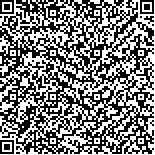|
| 引用本文: | 张齐飞,孙从建,向燕芸,李皎,刘显,梁家荣.2022.基于遥感信息的黄河中游水土流失敏感区淤地坝坝地资源特征研究[J].地球环境学报,13(4):357-368, 379 |
| ZHANG Qifei, SUN Congjian, XIANG Yanyun, LI Jiao, LIU Xian, LIANG Jiarong.2022.Study on the check dam resource features in the sensitive area of soil erosion in the middle Yellow River based on remote sensing information[J].Journal of Earth Environment,13(4):357-368, 379 |
|
| |
|
|
| 本文已被:浏览 2664次 下载 1771次 |

码上扫一扫! |
|
|
| 基于遥感信息的黄河中游水土流失敏感区淤地坝坝地资源特征研究 |
|
张齐飞,孙从建,向燕芸,李皎,刘显,梁家荣
|
1.山西师范大学 地理科学学院,太原 030031
2.山西财经大学 公共管理学院,太原 030006
3.黄河中游生态环境研究中心,太原 030031
4.中国科学院新疆生态与地理研究所 荒漠与绿洲生态国家重点实验室,乌鲁木齐 830011
|
|
| 摘要: |
| 淤地坝是黄河中游黄土高原区水土流失防治的有效工程措施之一,在拦泥淤地、建设农田、巩固退耕还林(草)、改善生态环境等方面发挥了重要作用。基于WorldView-2、Google Earth、Bing、Sentinel-2多源遥感影像并结合实地淤地坝监测资料、NDVI和土地类型数据,本文完成了晋西南地区淤地坝坝地资源(数目、面积、位置、坝系、流域面积)的统计,并对其运行现状进行了评估。结果表明:截至2021年,晋西南地区淤地坝共计12167座,总面积达71.19 km2。规模上该区主要以小型淤地坝(<0.015 km2)为主;空间上主要集中于中部的汾西县、洪洞县和浮山县地区,坝地数量和面积分别占总数量和面积的67.37%(8197座)和56.67%(40.35 km2)。目前,56.58%的淤地坝已经处于服务超限状态,平均超限4.35 a,其中,隰县、大宁县、汾西县、吉县和乡宁县地区淤地坝超限较为严重,60%以上的淤地坝已处于淤满状态。淤地坝的修建明显促进了黄土高原地区植被恢复、拦泥蓄容、建设耕地资源,但随着一些淤地坝的“淤满”,其生态和经济服务功能明显下降,并存在一定的潜在风险,亟需地方流域管理部门重视并采取有效措施。 |
| 关键词: 黄土高原 晋西南 淤地坝 遥感 水土流失 |
| DOI:10.7515/JEE212035 |
| CSTR:32259.14.JEE212035 |
| 分类号: |
| 基金项目:山西省基础研究计划(20210302123265,20210302123261) |
| 英文基金项目:Fundamental Research Program of Shanxi Province (20210302123265, 20210302123261) |
|
| Study on the check dam resource features in the sensitive area of soil erosion in the middle Yellow River based on remote sensing information |
|
ZHANG Qifei, SUN Congjian, XIANG Yanyun, LI Jiao, LIU Xian, LIANG Jiarong
|
1. School of Geographical Sciences, Shanxi Normal University, Taiyuan 030031, China
2. School of Public Administration, Shanxi University of Finance and Economics, Taiyuan 030006, China
3. Research Center of Ecology and Environment in the Middle Reaches of the Yellow River, Shanxi Normal University, Taiyuan 030031, China
4. State Key Laboratory of Desert and Oasis Ecology, Xinjiang Institute of Ecology and Geography, Chinese Academy of Sciences, Urumqi 830011, China
|
| Abstract: |
| Background, aim, and scope Check dam is one of the main engineering measures for soil and water loss control in the Loess Plateau region in the middle Yellow River, which plays an important role in preventing soil erosion, building farmland, returning farmland to forests and grassland, as well as improving ecological environment. In this study, the physical quantities (including number, area, geographical location, dam system and basin area) of check dam resources in the southwest region of Shanxi Province were cataloged and their current situations were evaluated. Materials and methods Multi-source remote sensing images of WorldView-2, Google Earth, Bing and Sentinel-2 imagery, together with field monitoring data of check dam, land use and the normalized difference vegetation index (NDVI) data, were adopted to extract check dam information and evaluate their current situations. Results By 2021, there have been 12167 check dams with a total area of 71.19 km2 in the southwest area of Shanxi Province. In scale, the vast majority of the check dams in this area are dominated by small ones (<0.015 km2). In spatial, the check dams are mainly distributed in Fenxi, Hongtong and Fushan counties, with the number and area of the check dams accounting for 67.37% (8197) and 56.67% (40.35 km2) of the total, respectively. Currently, 56.58% of check dams have exceeded their work duration for an average of 4.35 a, particularly in Xixian, Daning, Fenxi, Jixian and Xiangning counties where more than 60% of the check dams have exceeded their work duration. Discussion In recent years, influenced by the global warming and the human activities, the contradiction between water supply and demand in this region has intensified, and the soil erosion has also exacerbated, especially in the hilly and gully regions where grain is produced. As an effective land use resource in Loess Plateau, check dam land can not only prevent soil erosion, but also provide fertile land resources. After the check dams are filled up, their capacity of silt storage and flood control declines, but they can still play a role in erosion reduction and sediment storage. Compared with the sloping land, the check dam land has a series of favorable conditions, such as easy access and high yield and stability. For example, every 1 hm2 of check dam land in the Loess Plateau amounts to 3—8 hm2 of sloping land. In this study, the total area of the check dam is 71.19 km2, which amounts to the farmland of 21357—56952 hm2. In addition, compared with other land use types, the check dam shows higher economic and ecological benefits. The NDVI of the check dam basin in the region studied has grew at a rate of 0.01·a−1, which has increased from 0.53 in 2000 to 0.70 in 2019, with a rise of 32.08%. Conclusions There are totally 12167 check dams with a total area of 71.19 km2 in the southwest region of Shanxi Province. 56.58% of the check dams have exceeded their work duration and will continue in the next five years. Recommendations and perspectives In order to understand the impact of the check dam construction on the Loess Plateau, it is necessary to analyze its dynamic change, such as the sediment transport, as well as the area changes of soil erosion over the years. The study will provide scientific support for ecological protection and economic development in this region. |
| Key words: Loess Plateau the southwest region of Shanxi Province check dam remote sensing water and soil erosion |
|
|
|
|
|

